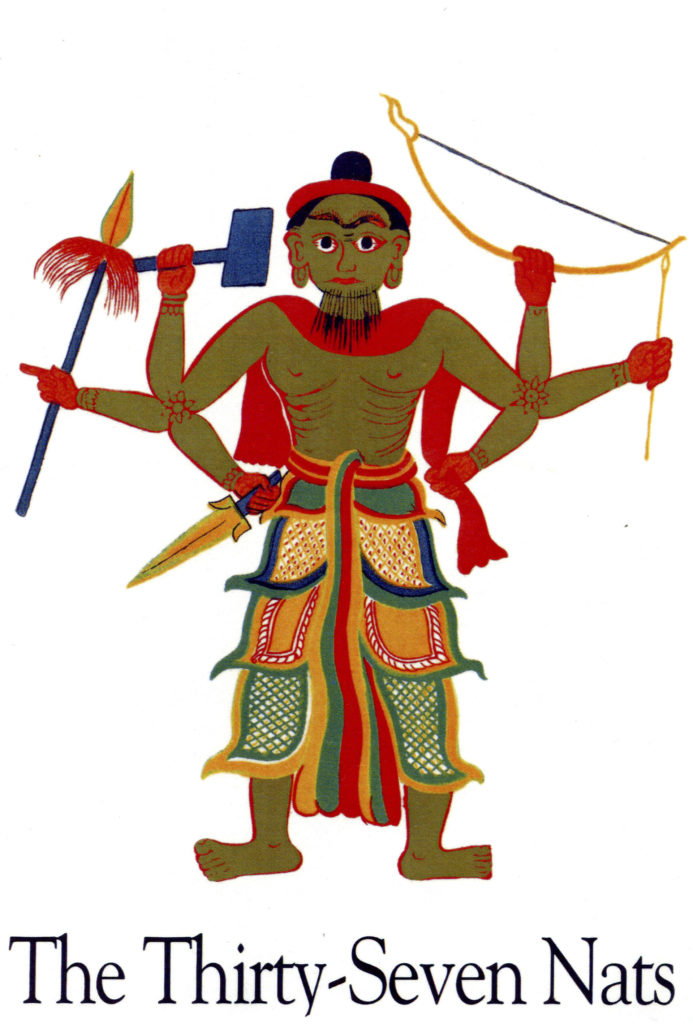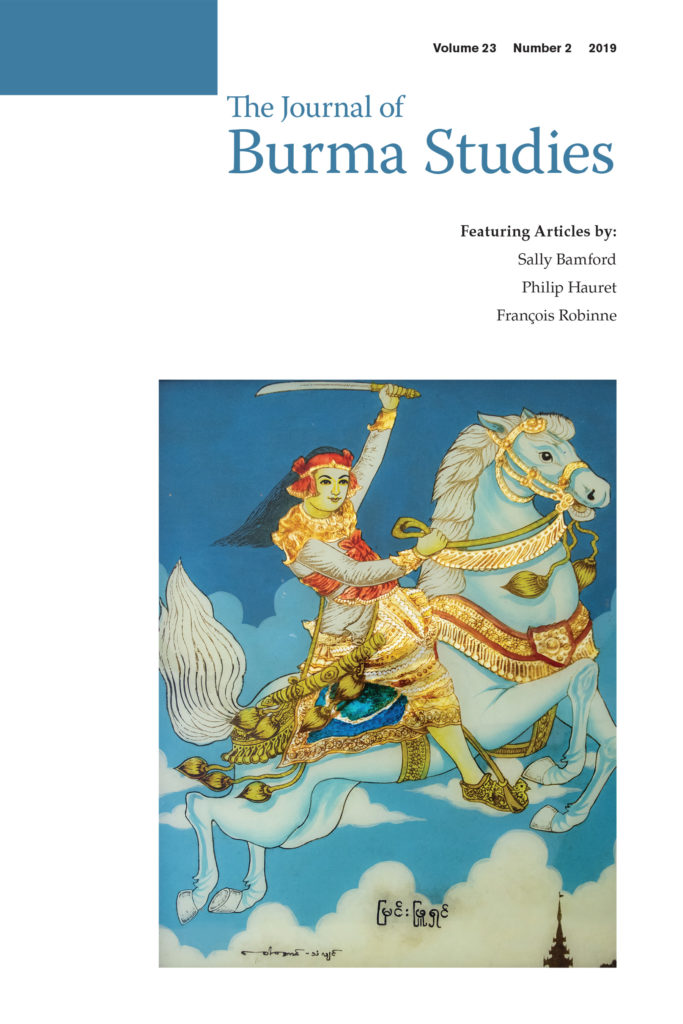
The three articles in the new issue of The Journal of Burma Studies offer a compelling picture of accounting: nats, coins, and people.
Editor’s Note
Jane M. Ferguson
Counting to 37: Sir Richard Carnac Temple and the Thirty-Eighth Nat
Sally Bamford
Burma’s nats have formed part of that country’s spiritual and material culture for centuries, and first came to the attention of the West via traveler and colonial memoirs. The most notable of these such accounts is undoubtedly Sir Richard Carnac Temple’s The Thirty-Seven Nats: A Phase of Spirit-Worship Prevailing in Burma, published in 1906 and still cited by scholars today.
This article argues that the reliance by Western (and some Burmese) authors on Temple’s book has led to several misconceptions concerning the nats. These include, for example, that the pantheon known in the West as “The Thirty-Seven Nats” is a royal pantheon constituted by Anawrahta in the 11th century, under the leadership of Thakya Min (Sakka), in order to enfold the nats into Buddhism. Yet primary sources, including Burmese court documents, paint a much fuller picture of the nats, detailing three separate pantheons of 37. Each pantheon contains very different types of nat, each of which played a specific role throughout Burma’s history.
Following a clarification of these pantheons, this paper draws on extant primary sources to suggest a different interpretation of the “Thirty-Seven Nats” and their role vis-à-vis Burma’s kings. The source material available to R.C. Temple is also considered, which reveals significant information which Temple overlooked when writing his book. This led, in turn, to wrongly identified illustrations included in his book, which obscured the identity of a “Thirty-Eighth Nat.” These errors have also had an impact on how one of the most prominent nats is depicted in more recent publications.
King Bodawpaya’s Effort at a Konbaung Coinage
Philip Hauret
In 1797 King Bodawpaya became the first Konbaung king to introduce a national coinage by issuing copper and silver coins minted in both Calcutta and Amarapura. A British envoy, Hiram Cox, delivered the Calcutta coins and additional minting equipment to Amarapura and witnessed first-hand the roll-out of the new monetary system. Deriding the effort as incompetent and avaricious, Cox’s account has served as the basis for all subsequent historical and numismatic treatments. This paper examines this effort in a new light, and with the support of additional evidence uncovered in the 20th century, paints a picture far less negative than British accounts. The kingdom’s efforts, arguably inadequate to the task, nonetheless demonstrated a certain degree of planning and logical action. And despite Cox’s characterizations, the new coinage was apparently based upon an existing system of monetary value, resulting in coinage that continued to circulate throughout most of the 19th century.
Thinking Through Heterogeneity: An Anthropological Look at Contemporary Myanmar
François Robinne
Anchored in an ethnic-state structure since the 1947 Panglong Agreement, ethnic politics and ethnic determinism in Burma have become imprescriptible in the eyes of various actors, especially ethnic and religious elites, the military junta, civilian authorities, civil society, academics and international bodies. Based on years of field surveys devoted to the study of multiethnic crossroads and the de facto landscapes of hybridity in the highlands of Burma, the anthropological perspective of this paper invites us to leave the identity trap. An essentialist notion of ethnicity is not only at the root of the country’s ongoing civil war, but also continues to dictate parliamentary politics in the country. This paper will also consider how the democratic transition is itself caught up in this identity trap.






